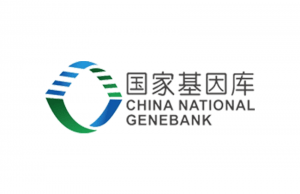SHENZHEN, China, Sept. 22, 2016 — Today’s official opening of the China National GeneBank (CNGB) marks a new phase in Chinese-International genomics collaboration, providing scientists from across the world with access to one of the world’s most comprehensive and sophisticated biorepositories with the goal of enabling breakthroughs in human health research and contributing to global biodiversity conservation efforts.
Based in Shenzhen and officially opened on 22 September 2016, the billion-dollar CNGB covers more than 47,500 square meters and has an integrated structure of “Three Banks and Two Platforms”, consisting of a Biorepository, Bioinformatics Data Centre and Living Biobank, and a Digitalization Platform and Synthesis and Editing Platform.
Partners from around the world welcomed CNGB’s contribution to scientific collaboration and preserving the planet’s biodiversity.
Initiated by China’s National Development and Reform Commission in 2011, the CNGB is the result of five years of development by the world’s largest genomics organization, BGI.
BGI President and Co-founder, Professor Jian Wang, said the mission of CNGB is to preserve the essence of billion years evolutionary history and deposit the life foundation of billions of people.
“The China National GeneBank represents the new generation of a genetic resource repository, bioinformatics database, knowledge database and tool library, to systematically ‘Store, Read, Understand, Write, and Apply’ genetic data,” said the Director of CNGB, Mr. Yonghong Mei.
“CNGB will integrate new trends in life science and international cutting-edge developments in omics to further strengthen the ‘three banks and two platforms’ function, a model which covers the spectrum from resources to scientific research.”
Stage I of the CNGB Biorepository stores more than 10 million traceable bio-samples, including human, plant, animal and microbes and will establish international standards in bio-sample collection, storage and management.
The Bioinformatics Data Canter is focused on establishing a high-performance data management system to store and interpret biological information, and during its first phase has already achieved 20PB (20 million gigabytes) access capability and will reach 500PB in phase II. It hosts over 10 databases, with a search engine, data transmission, and cloud computing support.
The Digital Platform launched is equipped with 150 BGISEQ-500 benchtop sequencers and 1 super sequencer, RevolocityTM, producing 5Pb data per year, which is the equivalent sequencing capacity of 50,000 whole genome sequencing.
The Synthesis and Editing Platform aims to develop a super high throughput and low cost foundry.
The Living Bank is expected to save and protect around 300,000 species of plants and millions of animals and microbes and will accelerate digitization of resources to lead to other innovative applications.
“CNGB aims to create a network to foster global collaboration and communication, and to promote innovation in the community,”said the Executive Director of CNGB, Dr. Xun Xu. It has formed strategic collaborations with the Food and Agriculture Organization (FAO), Consultative Group for International Agricultural Research (CGIAR), Smithsonian Institution (SI), and Global Genome Biodiversity Network.
The opening of the CNGB also saw the signing of cooperation agreements with global partners Svalbard Global Seed Vault, German Cancer Research Center (DKFZ), Shenzhen Institute of Advanced Technology, Huawei and Aliyun in the areas of seed digitalization, the epigenetics of children’s health and phage genome synthesis.
The Smithsonian Institution Under Secretary for Science, W. John Kress, said stockpiling the planet’s biodiversity in gene banks for the future was one of the most important and essential endeavours that scientists could pursue.
“The collaboration between BGI, the China National GeneBank and the Smithsonian Institution builds a strong partnership between premier research organizations that will ensure we achieve this goal,” he said. “Working together is the best insurance for success.”
The leader of Genome 10K Consortium, Stephen J. O’Brien, said, “On behalf of the leadership of the Genome10K Consortium, I am delighted to offer our deepest and most sincere congratulations to the BGI scientists and leadership on the inauguration of the innovative and audacious China National Genebank (CNGB) Building in Shenzhen. The CNGB is likely to become a landmark-center in genome sequencing, analyses and data-release for the translational betterment of our fragile planet, continuing the well established BGI tradition of creating open and forward-seeking scientific intersections across the globe.”


